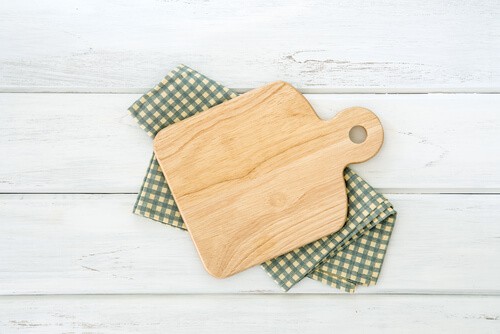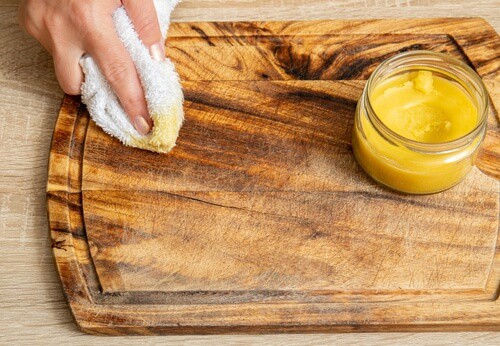Here’s the full guide to choosing cutting boards for Japanese knives with a few recommendations. Check it out!
Choosing the right cutting board for your Japanese knife can be a surprisingly nuanced task. This guide aims to demystify the process, offering a factual and objective overview of your options.
We'll explore the characteristics of various materials, from the classic allure of wood to the modern practicality of plastic, even venturing into the realm of innovative alternatives.
We'll delve into considerations like size, budget, and maintenance, ensuring you make a well-informed decision that complements your needs and kitchen space.
Why Is the Right Cutting Board Important For Japanese Knives?
Imagine gliding on ice skates across cobblestones – that's what using a hard, unforgiving surface feels like for your delicate Japanese knife.
Every chop, every slice, sends vibrations resonating through the blade, dulling its sharpness and threatening its integrity.
This is where the magic of the right cutting board comes in, transforming the kitchen into a smooth ballet of culinary precision.
But beyond the metaphor, here's why choosing the right cutting board is crucial for your prized Japanese knife:
Blade Preservation:
- Hardness Matters: Japanese knives boast razor-sharp, high-carbon steel blades. These marvelously thin edges, honed to incredible angles, are easily damaged by hard surfaces like glass or granite. A suitable cutting board acts as a cushion, absorbing the impact of your chops and protecting the delicate edge from nicks and chips.
- Dulling Dilemma: Every contact with a hard surface leaves microscopic scratches on the blade, dulling it over time. A softer cutting board, like wood or certain plastics, absorbs this minor wear and tear, minimizing the need for frequent sharpening and preserving the razor-sharpness for longer.
Knife Longevity:
- Chip Champions: The worst nightmare for any knife owner? Chipped edges. These jagged imperfections not only compromise cutting performance but also pose a safety hazard. A softer cutting board provides a forgiving surface, reducing the chances of chips and cracks, and extending the life of your investment.
- Stress Busters: The constant vibrations caused by hard surfaces can weaken the delicate structure of a Japanese knife. A suitable cutting board acts as a shock absorber, reducing stress on the blade and handle, keeping your prized tool in pristine condition for years to come.
Beyond Protection:
- Hygiene Hero: Certain cutting boards, like those made from wood or certain plastics, have natural antibacterial properties. They inhibit the growth of harmful bacteria, ensuring a cleaner and safer food preparation environment.
- Aesthetic Accomplice: The right cutting board isn't just functional; it can also be a beautiful addition to your kitchen. Wood boards with their rich tones and natural grains, or even vibrant silicone mats, add a touch of personality to your culinary space.
In essence, choosing the right cutting board is an act of love for your Japanese knife. It's about nurturing its potential, preserving its exceptional performance, and ensuring it becomes a cherished companion in your culinary adventures.
So, delve into the world of wood, plastic, and even silicone, and find the perfect partner that unlocks the true magic of your Japanese knife.
Types of Cutting Boards for Japanese Knives
Wooden Cutting Boards
The classic choice, wood reigns supreme for its beauty and functionality. Hinoki cypress, walnut, maple, and beech stand out for their knife-friendly nature, with naturally occurring oils that offer a self-healing effect.

They absorb impact, protecting the edge, and their gentle grain holds the blade without snagging. But wood demands a bit of love: regular oiling to prevent drying and cracking, proper drying to avoid warping, and storage away from moisture.
- Recommendation: Shun Hinoki Cutting Board – This handcrafted Hinoki masterpiece offers a stunning blend of aesthetics and performance.
Plastic Cutting Boards
Lightweight, hygienic, and dishwasher-safe, plastic boards offer convenience and affordability. However, some types can dull knives faster than wood.

To avoid this, opt for high-density polyethylene (HDPE) or nylon boards, which are gentler on delicate edges. Just remember, plastic carries limitations – they may crack or melt at high temperatures and lack the durability of wood.
- Recommendation: OXO Pro Cutting Board – This sturdy HDPE board with non-slip feet and built-in juice grooves is a practical and hygienic choice.
End-grain boards

Renowned for their durability and exceptional knife-friendliness, end-grain boards boast exposed wood fibers that release the blade cleanly after each cut. The downside? They require meticulous maintenance, needing mineral oil applications and regular sanding to maintain their smooth surface.
- Recommendation: John Boos Block End-Grain Maple Cutting Board – This board is an investment in culinary luxury, offering unrivaled performance and timeless beauty.
Silicone mats
These flexible mats are convenient and hygienic, perfect for small tasks like chopping herbs. However, they lack the thickness and stability needed for heavy-duty chopping and can cause blades to slip.
- Recommendation: Chef's Planet Silicone Cutting Mat – This colorful mat is non-slip and dishwasher-safe, making it a handy addition to your kitchen arsenal.
Additional Considerations When Choosing a Cutting Board For Japanese Knives
Beyond material, there are other factors to consider:
Size and Thickness:
- Space Saver vs. Workhorse: Consider your typical workload and counter space. Smaller boards (around 10"x14") are great for everyday tasks like chopping herbs or garlic, while larger ones (12"x18" or bigger) provide ample space for slicing vegetables or butchering meat.
- Thin and Nimble vs. Sturdy and Stable: Thicker boards (1.5" or more) offer superior stability and shock absorption, but can be heavy and cumbersome. Thinner boards (around 1") are lighter and easier to store, but might flex on heavier tasks. Find a balance that suits your comfort and needs.
Design Features:
- Handles for Easy Grip: Carrying a heavy board loaded with ingredients can be a backbreaker. Look for comfortable, sturdy handles to make transporting your board a breeze.
- Juice Grooves for Mess-Free Chopping: Keep those juicy fruits and vegetables from cascading onto your countertop. Boards with built-in juice grooves channel away liquids, maintaining a clean work area.
- Non-Slip Feet for Secure Chopping: Nobody likes a board that slides around during intense chopping sessions. Non-slip feet offer stability and prevent accidents, keeping your fingers safe and your food intact.
Budget:
- Investing in Performance: Cutting board prices vary greatly depending on material, brand, and size. Wood boards, especially exotic woods or end-grain, can be a significant investment, but offer exceptional durability and aesthetics. Plastic boards are generally more affordable and come in a wider variety of colors and designs. Ultimately, choose a board that fits your budget without compromising on quality and functionality.
Remember, there's no one-size-fits-all solution. Consider your priorities and preferences when making your decision. Do you value knife-friendliness above all else? Opt for a top-quality wood board.
Need something lightweight and dishwasher-safe? A good plastic board might be your perfect match.
And if counter space is at a premium, a smaller board with convenient features like handles and juice grooves could be your ideal companion.
Caring for Your Cutting Board
Just like your Japanese knife, your cutting board deserves care. Regular maintenance keeps it in optimal condition:
- Wood: Oil regularly with mineral oil, dry thoroughly, and store in a cool, dry place.

- Plastic: Wash with warm soapy water, sanitize periodically, and avoid high temperatures.
- End-grain: Oil regularly, sand occasionally to maintain smoothness, and store away from moisture.
- Silicone: Wash with soapy water or wipe clean.
Conclusion
Choosing the right cutting board for your Japanese knife is an act of respect, a commitment to preserving its exquisite edge and unleashing its full potential. So, invest in a quality board that aligns with your needs and budget, and treat it with the same care you show your knife.
Together, they'll form a culinary duo that dances through kitchen tasks with precision and grace.
Cutting Board For Japanese Knives: FAQs
What's the best wood for a Japanese knife?
Hinoki cypress offers exceptional knife-friendliness and natural antibacterial properties, but requires meticulous care. Walnut is a good balance of performance and affordability. Maple is lighter and slightly firmer than walnut. Beech is a budget-friendly option but more prone to scratches.
Is an end-grain board worth the extra cost?
If you're a serious cook and prioritize knife-friendliness and durability, then yes. However, be prepared for regular oiling and occasional sanding.
Are silicone mats safe for Japanese knives?
They're suitable for small tasks like chopping herbs, but avoid heavy chopping as they can dull the blade and cause the board to slip.
Why do I need a special cutting board for my Japanese knife?
Regular kitchen boards are often too hard and can damage the delicate edge of your Japanese knife, causing dulling and chipping. A softer cutting board absorbs the impact of your chopping, protecting the blade and extending its life.
What materials are best for Japanese knives?
Wood is the classic choice, offering knife-friendliness, natural beauty, and self-healing properties. Popular wood options include hinoki cypress, walnut, maple, and beech. Plastic boards are affordable and hygienic, but choose HDPE or nylon for gentler knife contact. End-grain boards are highly durable and knife-friendly but require more maintenance. Silicone mats are convenient for small tasks but not ideal for heavy chopping.
How do I care for my wooden cutting board?
Regularly oil it with mineral oil to prevent drying and cracking. Dry it thoroughly after use and store it in a cool, dry place.
How do I clean my plastic cutting board?
Wash it with warm soapy water and sanitize it periodically. Avoid high temperatures.
How do I know when to replace my cutting board?
Replace your board if it shows signs of excessive wear and tear, cracking, or deep scratches. A damaged board can harbor bacteria and dull your knife faster.
Also Read:




Comments (0)
There are no comments for this article. Be the first one to leave a message!